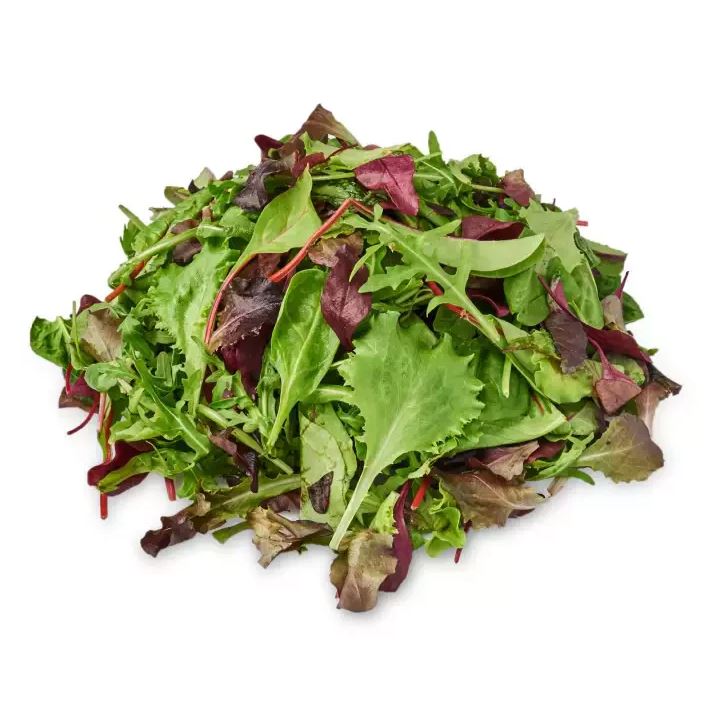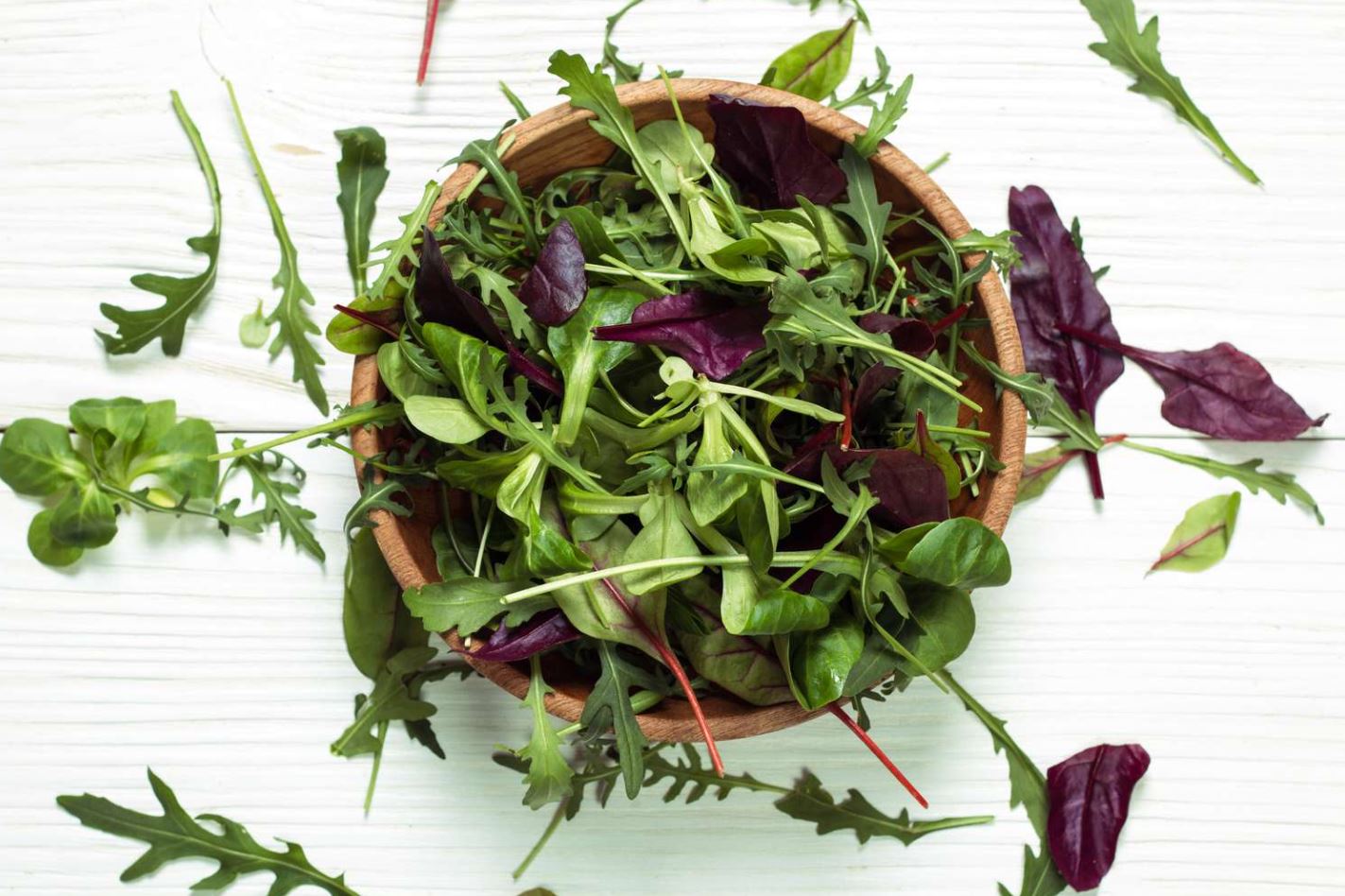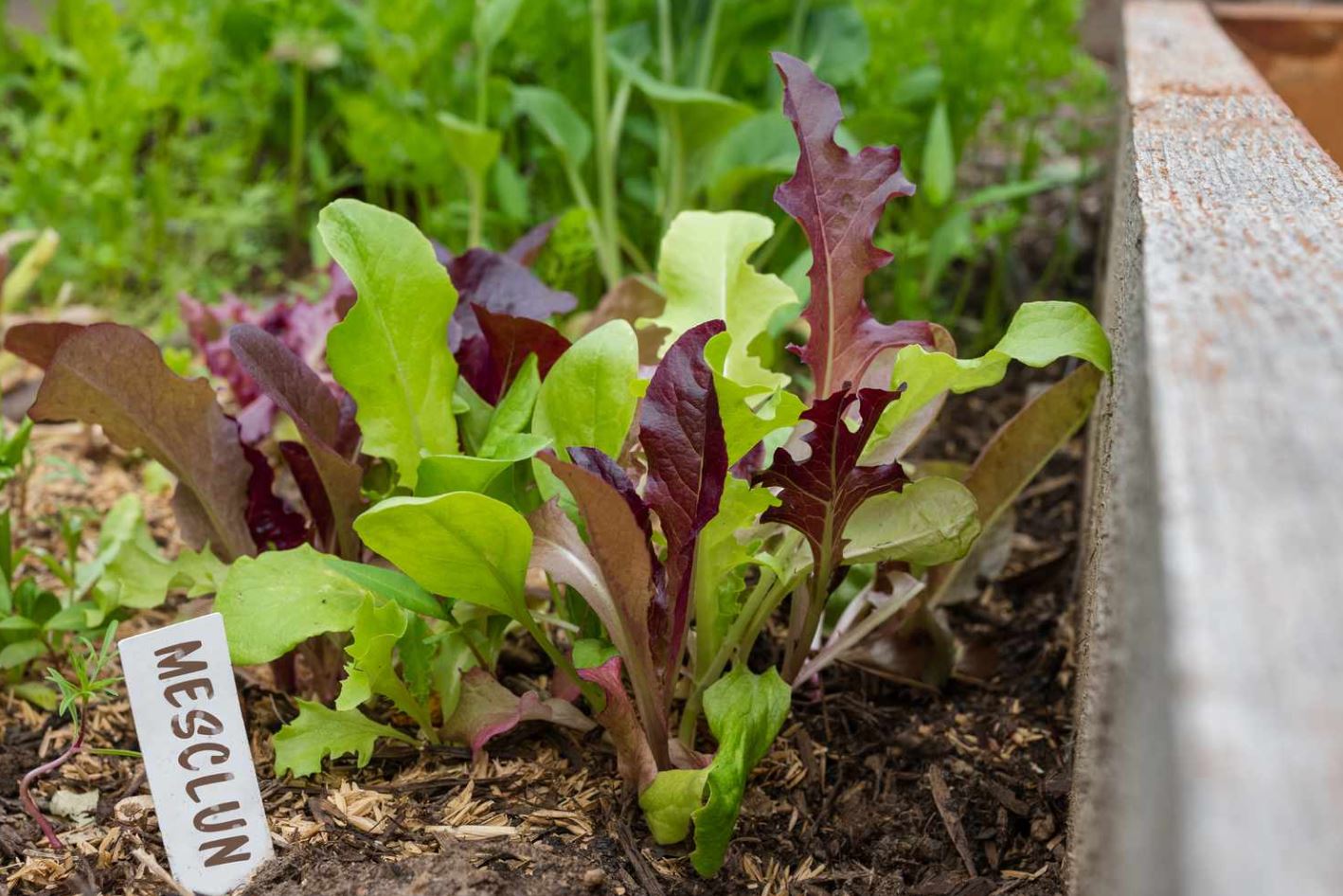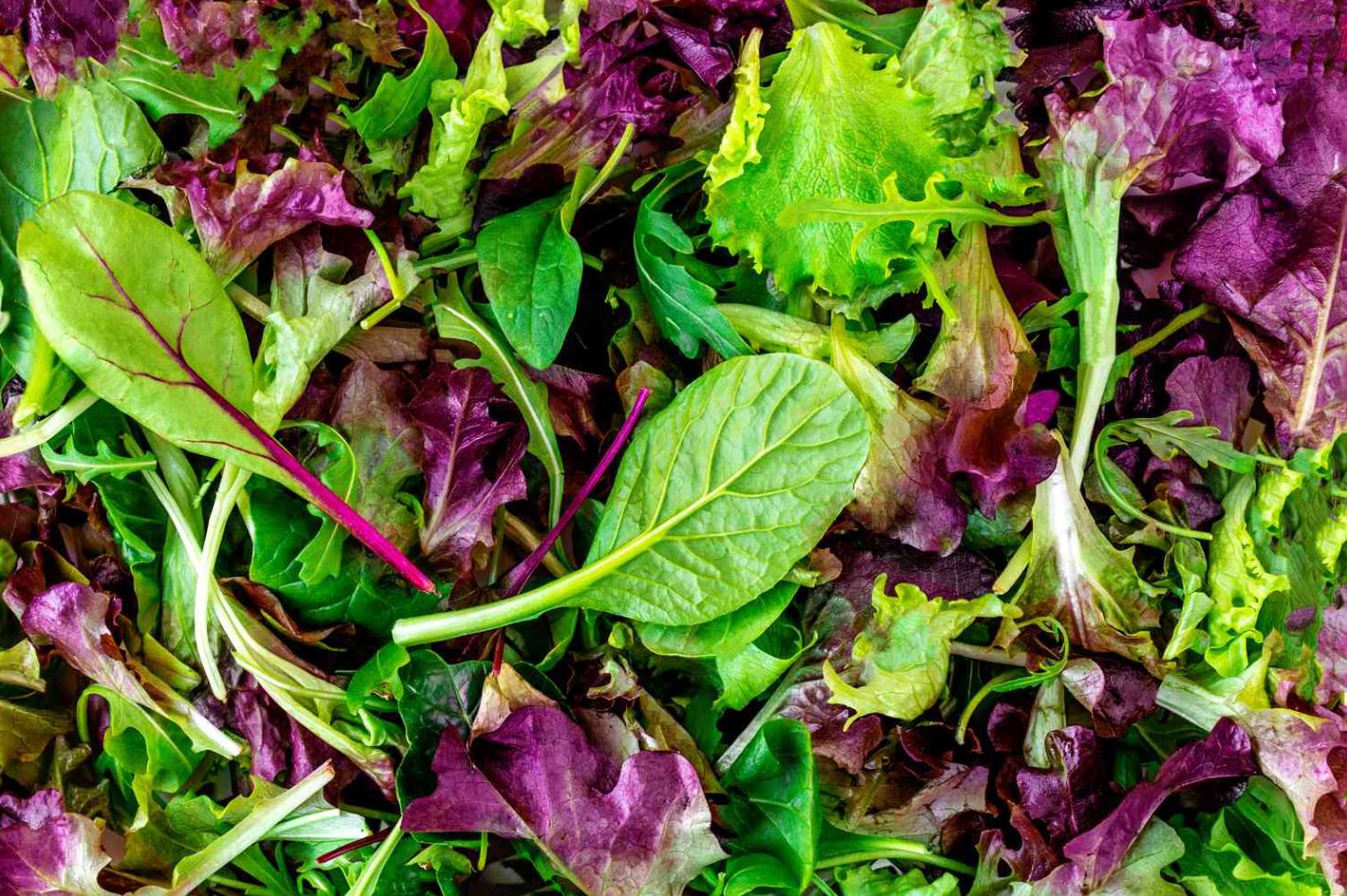Mesclun Lettuce of Greens from the Heart of Provence
Mesclun Lettuce, a term rooted in the Provençal dialect, epitomizes the vibrant culinary tradition of southern France. Originating from the scenic region of Provence, mesclun translates from the verb mesclar, meaning to “mix thoroughly,” aptly describing this diverse blend of young salad greens. The mix, initially a simple medley of whatever greens were available, has evolved into a sophisticated symbol of freshness and variety in salads.
Traditionally, mesclun lettuce included a mixture of chervil, arugula, leafy lettuces, and endive. These choices were not random but were celebrated for their complementary flavors and textures, which ranged from the mild and delicate to the peppery and crisp. This classic combination provided a balanced taste experience that was both harmonious and nuanced, offering a peek into the rustic gardens of Provence.
Over the years, as mesclun lettuce gained popularity beyond the French borders, its composition began to include a wider array of greens, reflecting both regional and seasonal availability. Contemporary blends might feature baby spinach, collard greens, Swiss chard, mustard greens, dandelion greens, frisée, mizuna, mâche (also known as lamb’s lettuce), radicchio, and sorrel, among others. This expansion of ingredients has transformed mesclun from a traditional French salad to a global culinary phenomenon, adaptable to different palates and preferences.
Today, mesclun is celebrated in kitchens and restaurants worldwide, not only for its aesthetic appeal—with a palette of vibrant greens, reds, and yellows—but also for its ability to complement a myriad of dishes, from simple rustic breads and cheeses to sophisticated gourmet entrees. As such, mesclun continues to represent a delicious melding of old-world tradition and contemporary culinary innovation.
| Aspect | Details |
|---|---|
| Origin | Rooted in the Provençal dialect, originating from Provence, France. Named after the verb mesclar, meaning “to mix thoroughly.” |
| Traditional Composition | Initially included chervil, arugula, leafy lettuces, and endive, celebrated for their complementary flavors and textures. |
| Evolution | Gained popularity beyond French borders, incorporating a wider array of greens like baby spinach, Swiss chard, radicchio, and others, reflecting regional and seasonal availability. |
| Culinary Uses | Used worldwide in various dishes, appreciated for its aesthetic appeal and versatility, complementing everything from simple rustic meals to sophisticated entrees. |
| Significance | Represents a melding of old-world tradition and contemporary culinary innovation, symbolizing freshness and variety in salads. |
Contents
Historical Roots and Cultural Significance
The story of mesclun begins in an unexpected venue—a bustling Parisian restaurant, the Cochon d’Or, in 1924. It was here that Philippe Tiranty and Paul Gordeaux, along with a gathering of friends, coined the term “Lou Mesclun.” This group, comprised mostly of comedians and humanists, sought to capture their camaraderie and collective spirit in a single expression. Choosing “Lou Mesclun” symbolized their diverse backgrounds and the joy of their union, defining mesclun as more than a salad mix but a representation of “real living together.” This origin story highlights how mesclun is steeped in social connection and cultural confluence, stemming from a deep sense of community and shared experiences.

Mesclun’s linguistic journey is as rich and varied as its ingredients. Officially entering the culinary lexicon in 1976, the term originates from the Provençal word mesclar, which means to mix thoroughly. This etymology is not only a literal description of the salad’s preparation but also a metaphor for the blending of cultures and traditions that it represents. In Provence, where local farmers brought their unique mix of greens to market, mesclun became a symbol of communal identity, showcasing the region’s agricultural diversity and gastronomic creativity. Each farmer’s choice of greens reflected personal taste and local agricultural conditions, making mesclun a vibrant tapestry of regional flora.
| Aspect | Details |
|---|---|
| Origin Story | Coined in 1924 at the Parisian restaurant Cochon d’Or by Philippe Tiranty, Paul Gordeaux, and friends, who were mostly comedians and humanists. The term “Lou Mesclun” symbolized their diverse backgrounds and collective spirit. |
| Linguistic and Cultural Roots | Derived from the Provençal word mesclar, meaning to mix thoroughly, reflecting both the literal mixing of salad ingredients and the metaphorical blending of cultures and traditions. |
| Regional Significance | In Provence, mesclun became a symbol of communal identity and gastronomic creativity, showcasing the region’s agricultural diversity. Each mix of greens reflected personal taste and local conditions, contributing to a vibrant regional culinary tapestry. |
| Entry into Culinary Lexicon | The term ‘mesclun’ was officially entered into the culinary lexicon in 1976, highlighting its established role in the culinary arts and its ongoing cultural relevance. |
Traditional Components of Mesclun
The quintessential mesclun mix is both an art and a science, balancing flavors, textures, and colors. The traditional core components include chervil, arugula, leafy lettuces, and endive—each selected for its unique contribution to the overall palate. Chervil, with its slight anise flavor, adds a subtle sweetness, while arugula offers a peppery punch. Leafy lettuces, like oakleaf and romaine, provide a crisp, mild base that complements the sharper flavors of endive. Over time, as the popularity of mesclun has grown, so too has the variety of greens included in the mix. Contemporary mesclun might also feature baby spinach, known for its smooth texture and slight earthiness; Swiss chard, or silver beet, which introduces a colorful vibrancy and a rich, slightly salty flavor; and mustard greens, which add a spicy, robust depth.

Mesclun reflects the agricultural landscape and cultural preferences of where it is grown. In the Provence region, particularly around Nice, local farmers have historically contributed to the mix’s diversity by incorporating greens that thrive in the Mediterranean climate. For instance, baby dandelion greens, with their slight bitterness, are often included for their health benefits and availability throughout the spring. In the cooler, more temperate areas, mâche, or lamb’s lettuce, is favored for its nutty, buttery flavor and delicate texture. These regional nuances not only highlight the adaptability of mesclun to different growing conditions but also the personal touches farmers bring to their specific blends. This regional diversity not only makes each mesclun mix unique but also tells a story of the local soil, climate, and culinary traditions.
In essence, mesclun is more than just a salad; it is a celebration of diversity, both in terms of its ingredients and the cultural tapestry it represents. As it has evolved from a simple mix of what was available into a carefully curated blend of tastes and textures, mesclun continues to embody the spirit of communal dining and the joy of shared harvests. Whether in a Parisian café or a Provençal market, mesclun remains a vibrant symbol of culinary harmony and cultural heritage.
| Aspect | Details |
|---|---|
| Core Components | Traditional mesclun includes chervil (subtle sweetness), arugula (peppery punch), leafy lettuces (crisp base), and endive (sharp flavor). |
| Contemporary Variations | Expanded to include baby spinach (smooth texture), Swiss chard (colorful vibrancy), and mustard greens (spicy depth), reflecting wider regional and seasonal availability. |
| Regional Influences | In Provence, variations like baby dandelion greens and mâche (lamb’s lettuce) reflect local agricultural conditions and preferences, adding unique flavors and textures to the mix. |
| Cultural Significance | Mesclun symbolizes a celebration of diversity, embodying the spirit of communal dining and shared harvests. It serves as a vibrant example of culinary harmony and regional culinary heritage. |
Modern Adaptations and Uses
Renowned chef Alice Waters, a pivotal figure in the farm-to-table movement, has long emphasized the importance of mesclun in reflecting the essence of Provencal markets. Waters describes mesclun as “a melange of the first tender young leaves which appear in the garden,” underscoring its significance in bringing the fresh, vibrant flavors of the Provence countryside to the dining table. According to Waters, the traditional and authentic varieties of mesclun typically include rocket (similar to arugula found in Italian markets), chervil, mâche (lamb’s lettuce), and oakleaf lettuce, with occasional additions like baby curly endive (chicory) or young dandelion greens, depending on the grower’s harvest and personal taste.
In contemporary culinary practices, mesclun has transcended its regional origins to become a staple in kitchens worldwide. Modern chefs utilize mesclun not only for its aesthetic appeal but for its ability to enhance dishes with a complex mix of flavors and textures. Mesclun is often paired with a simple vinaigrette to highlight its freshness, but it also complements richer ingredients like goat cheese, roasted nuts, and sliced pears or apples in salads. Beyond salads, mesclun can be used as a bed for grilled meats and seafood, providing a peppery undertone that contrasts beautifully with the smoky flavors of the protein.

Mesclun made its North American debut in the early 1980s, primarily through upscale restaurants and boutique farm stands that embraced the growing interest in diverse and gourmet greens. The concept of a “spring mix” became popular, encapsulating a blend similar to the traditional Provencal mesclun but adapted to include local and seasonal varieties available in North America. This mix typically consists of a dozen to three dozen different types of baby greens, including red and green oak leaves, romaine, lollo rossa lettuces, frisée, tatsoi, bok choy (joi choi), arugula, spinach, orach, mizuna, dandelion, mustard greens, and garden cress. The diversity in this blend not only caters to the American palate but also reflects the local agricultural practices and climatic conditions.
| Aspect | Details | Contemporary Practices |
|---|---|---|
| Traditional Composition | Alice Waters describes mesclun as a melange of the first tender leaves including rocket, chervil, mâche, and oakleaf, with occasional additions like curly endive or young dandelion greens. | Emphasizes the Provencal origins and the freshness and vibrancy these greens bring to the table. |
| Modern Culinary Use | Utilized worldwide for its aesthetic appeal and complex mix of flavors and textures; ideal for simple vinaigrettes, pairing with rich ingredients, or as a bed for proteins. | Mesclun enhances dishes in global cuisines, adapting to various culinary styles while maintaining its essence. |
| North American Adaptation | Introduced in the 1980s, mesclun in North America includes a diverse mix of up to three dozen types of baby greens, adapting to local tastes and agricultural conditions. | Reflects a broader adaptation to include greens like tatsoi, bok choy, and mustard greens, catering to the American palate and agricultural diversity. |
Growing and Sourcing Mesclun
Growing mesclun is accessible to both novice gardeners and seasoned farmers due to its uncomplicated cultivation requirements and short growth cycle. Mesclun thrives in cool to moderate climates and can be grown in a variety of soils, though it prefers well-drained, fertile ground. Planting can begin in early spring and continue into fall for a continuous harvest.
The “cut-and-come-again” method is particularly effective for mesclun; this involves harvesting the outer leaves when young and tender, which encourages new growth and allows for multiple harvests from the same planting. This method ensures a steady supply of fresh greens without requiring a large space or complex gardening techniques.
For chefs and home cooks alike, the freshness of mesclun is paramount, significantly enhancing its flavor and nutritional value. Locally sourced mesclun, often available at farmers’ markets or through community-supported agriculture (CSA) programs, typically offers the highest quality due to minimal time in transit, which preserves its delicate textures and flavors. Local sourcing also supports sustainable agricultural practices and boosts the local economy. In contrast, commercially packed mesclun, while convenient, may not always capture the same degree of freshness and can suffer from the stresses of long-distance transportation and extended shelf life. Therefore, for those seeking the true essence and crispness of mesclun, local sources are generally preferred.

Through its evolution from a regional specialty to an integral component of global cuisine, mesclun continues to celebrate the diversity of the natural world. Its adaptability in both growth and culinary use ensures that it remains a beloved choice for chefs and gardeners alike, embodying a blend of tradition and innovation.
| Aspect | Details | Benefits |
|---|---|---|
| Cultivation Requirements | Mesclun thrives in cool to moderate climates and prefers well-drained, fertile soil. Suitable for both novice and experienced gardeners. | Accessible and easy to grow, with a short growth cycle and the ability to thrive in a variety of environmental conditions. |
| Harvesting Method | Utilizes the “cut-and-come-again” method, harvesting the outer leaves to encourage new growth for multiple harvests. | Ensures a steady supply of fresh greens, maximizes yield from a single planting, and is space-efficient. |
| Local vs. Commercial Sourcing | Locally sourced mesclun from farmers’ markets or CSAs offers peak freshness and supports sustainable practices. Commercially packed mesclun may lack some freshness due to transit and storage. | Local sourcing ensures fresher produce, supports local economies, and promotes sustainability. |
Mesclun’s journey from a simple mix of young salad greens in the gardens of Provence to a global culinary staple encapsulates more than just the spread of a food item; it represents the fluidity and adaptability of culinary traditions as they intermingle across borders. This blend, which started as a humble assembly of whatever greens were readily available to farmers, has evolved into a symbol of gastronomic diversity and a celebration of seasonal and regional produce.
In its essence, mesclun was conceived out of necessity and practicality, a way for farmers around Nice to make use of all the young leaves at their disposal. However, the ingenuity of its composition—balancing flavors ranging from bitter and peppery to mild and sweet—quickly elevated its status. It wasn’t just the variety of greens that made mesclun special; it was the expression of the land itself, each leaf a testament to the soil and the climate of its region.
As mesclun crossed into different cultures, it was embraced and adapted, reflecting local tastes and available greens. In America, for instance, the concept of the “spring mix” illustrates mesclun’s flexibility, incorporating greens like tatsoi and mizuna, which were not part of the original French mix but have become staples in salad blends worldwide. This adaptation underscores the global culinary dialogue—how ingredients and dishes travel and transform.
Mesclun’s appeal lies not only in its aesthetic and gastronomic versatility but also in its ability to bring together different culinary traditions and practices. It acts as a canvas, allowing chefs and home cooks alike to experiment with textures and flavors. Whether it’s served beneath a seared piece of fish, tossed with a mustard vinaigrette, or simply used as a fresh side to a hearty meal, mesclun offers a refreshing diversity. It continues to evolve, with new varieties of greens being added as they become available or fall into seasonal favor.
Beyond the plate, the cultivation and sourcing of mesclun reflect broader themes in contemporary agriculture and gastronomy. The growing preference for locally-sourced and sustainably-grown produce has made mesclun a poster child for these movements. The “cut-and-come-again” method of harvesting, popular among mesclun growers, promotes sustainability and efficiency, making it a preferred choice for environmentally conscious consumers and producers.
The cultural significance of mesclun lettuce extends beyond its role as a food item. It symbolizes the blending of cultures—a literal and figurative melting pot of tastes. Each leaf in a mesclun mix can represent a different part of the world, each blend a different farmer’s signature. In this way, mesclun tells a story of global interconnectedness, of the shared human need for nourishment, and of the joy found in the earth’s natural bounty.
Looking forward, mesclun lettuce ‘s journey is far from complete. As global conversations around food security, sustainability, and climate change continue to grow, mesclun can serve as a model for crop diversity and resilience. Its ability to adapt to various climates and growing conditions makes it an ideal candidate for experimentation and use in changing agricultural scenarios.
In conclusion, mesclun lettuce is more than just a salad green; it is a vibrant narrative of agricultural innovation, culinary creativity, and cultural exchange. From its humble beginnings in the fields of Provence to its status as a beloved component of meals worldwide, mesclun continues to evolve, embracing new flavors and influencing dining traditions around the globe. It remains a testament to the dynamic, ever-changing nature of food and its power to connect us across continents and cultures.
Lettuce -A Comprehensive Guide to Storing Combatting Lettuce Wilt
Perfecting Lettuce Shreds A Comprehensive Guide to Shredding
Avoiding Lettuce Shortage with Indoor Gardening Techniques
Ultimate Guide to Lettuce Buttercrunch Cultivation and Care
Lettuce Boston From Cultivation to Cuisine
Succession Planting & Season Extension for Head Lettuce
Delicious Keto Hamburger Lettuce Wraps A Low-Carb Delight
